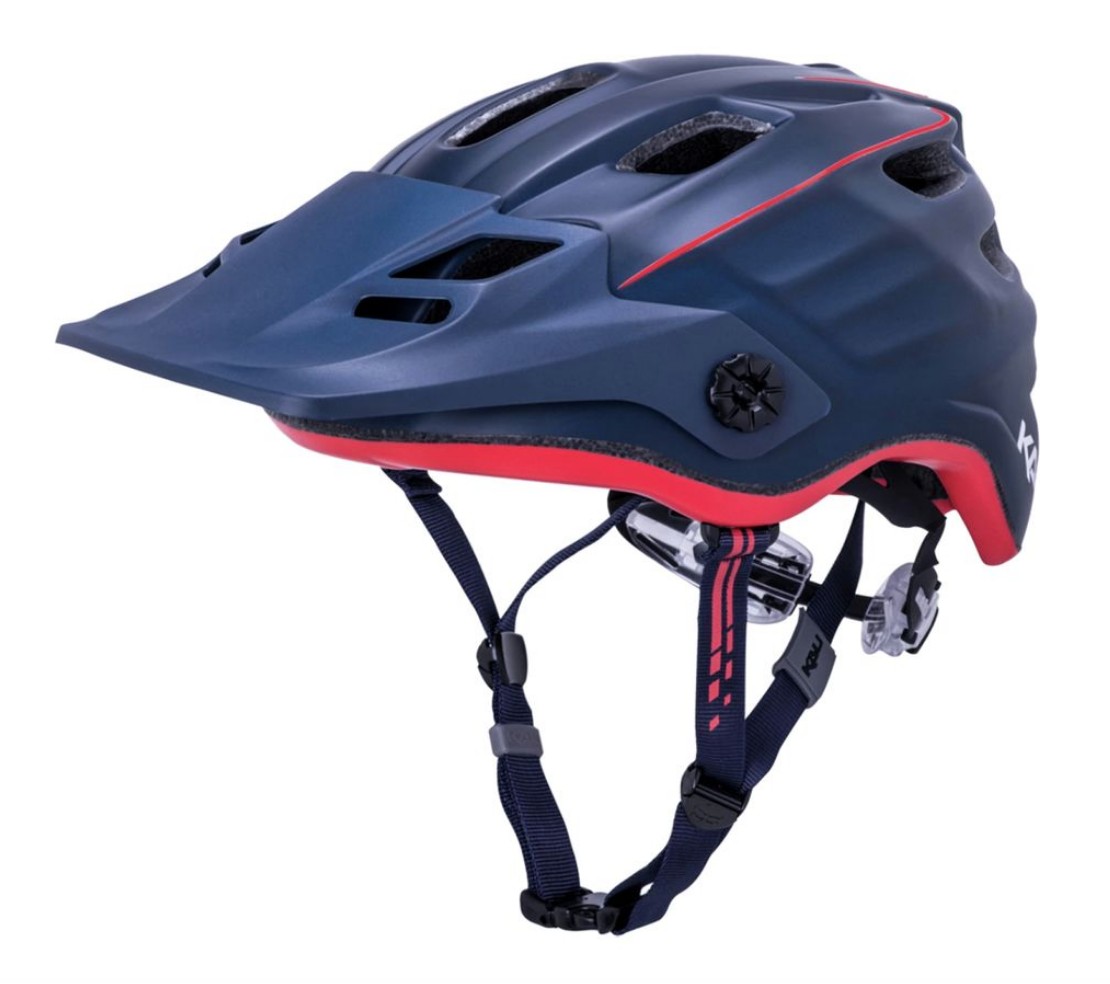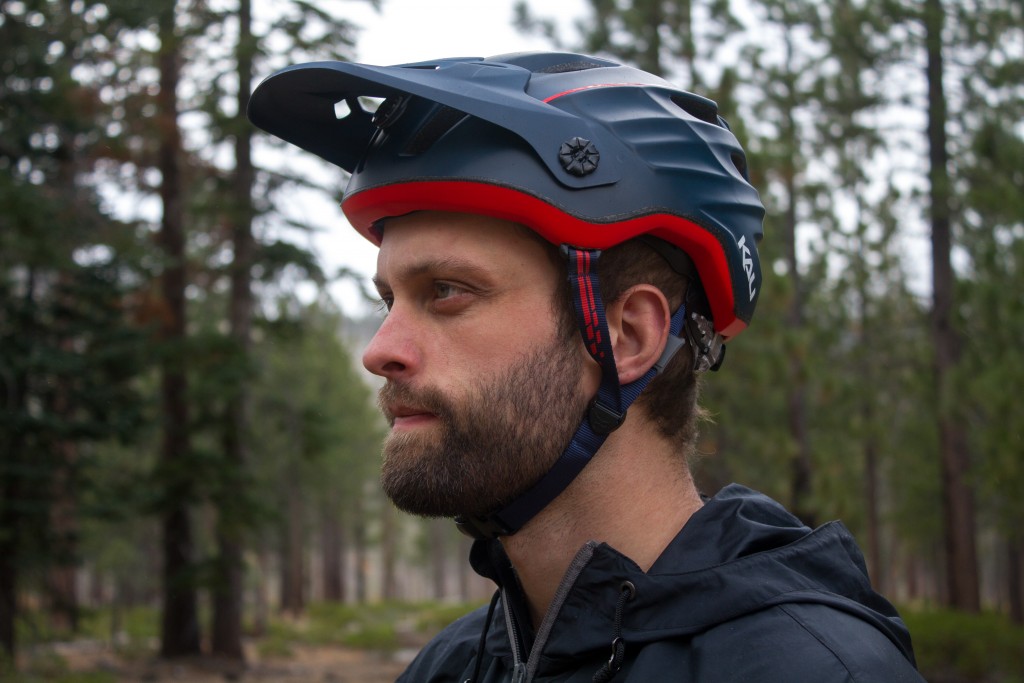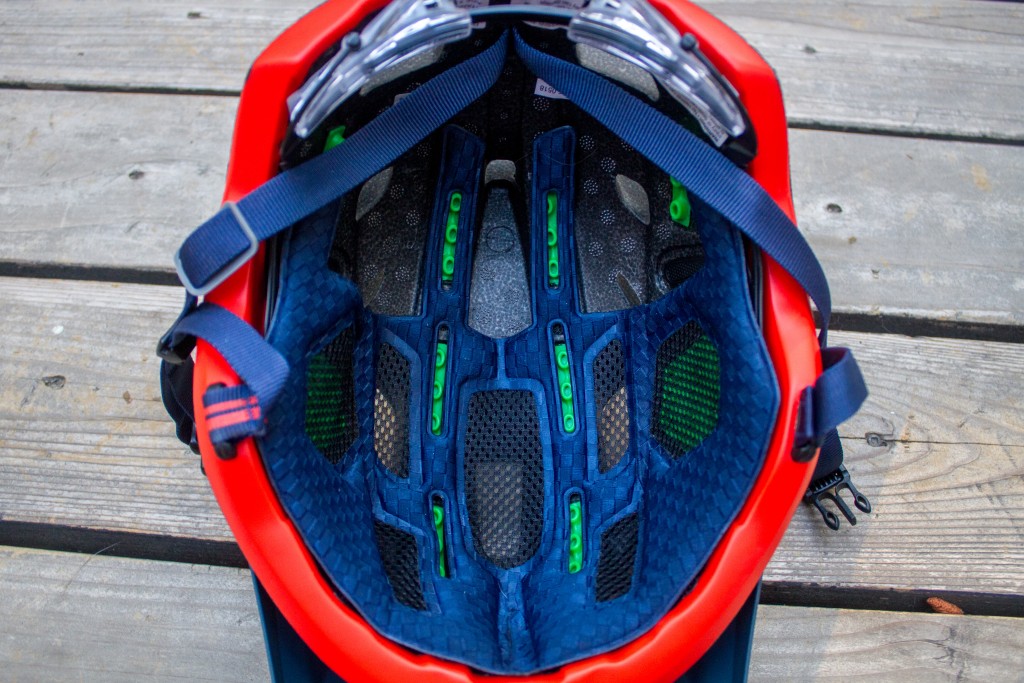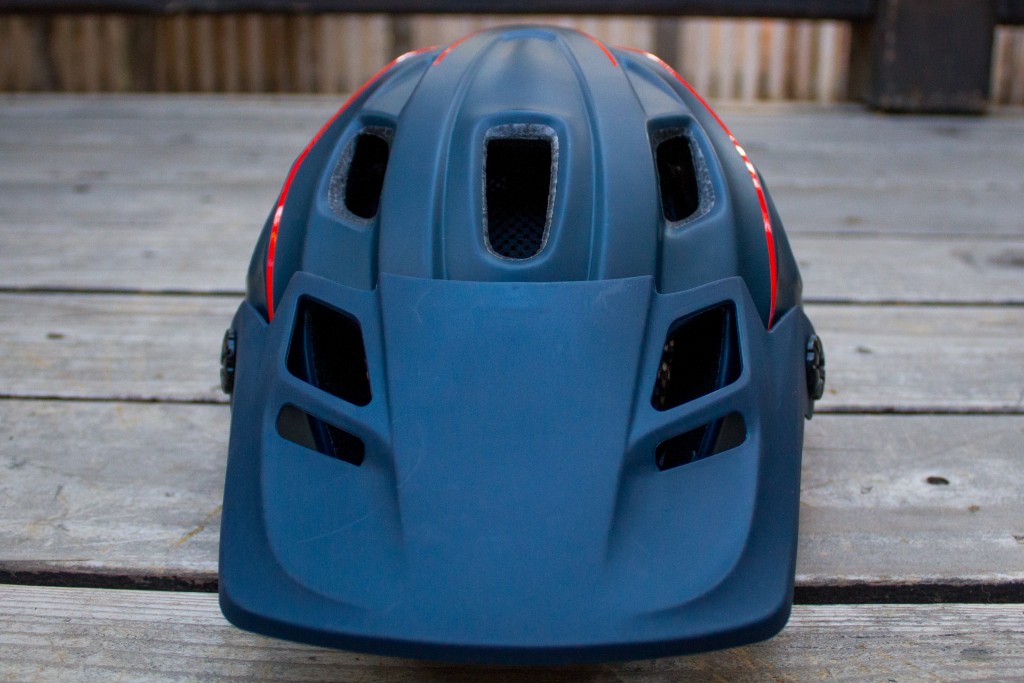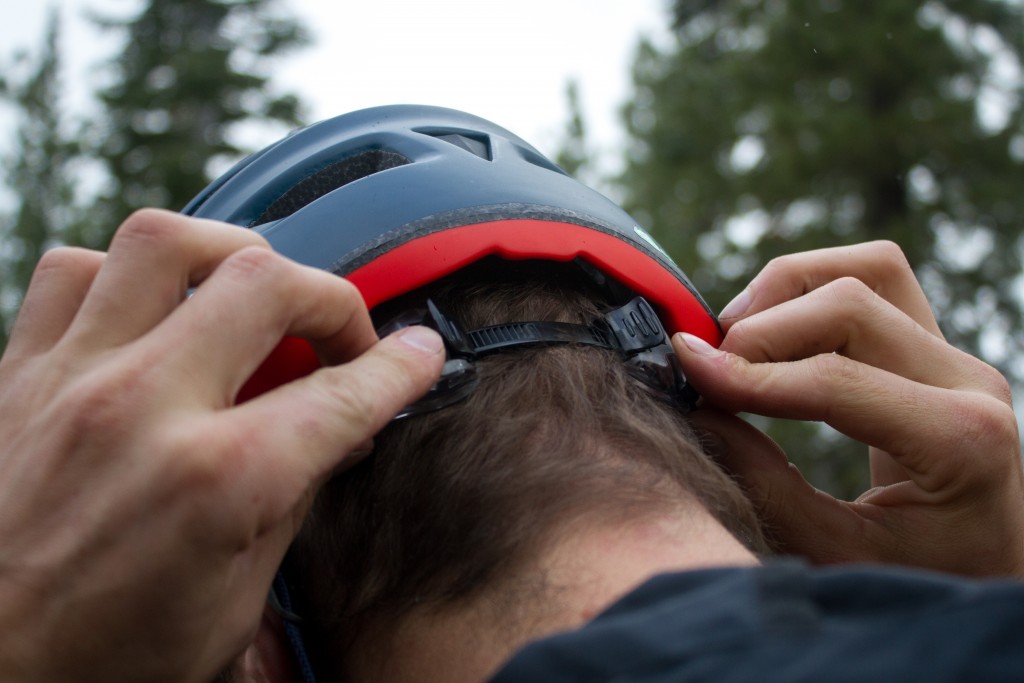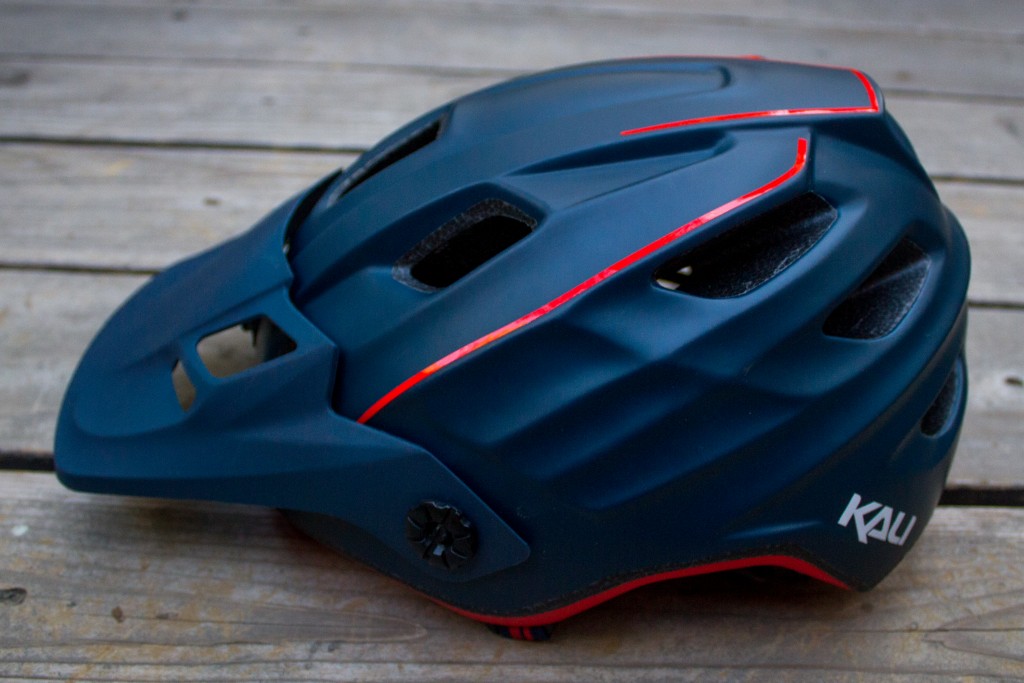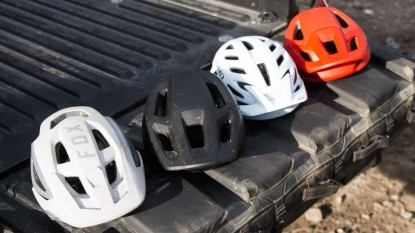Kali Protectives Maya 2.0 Enduro Review
Our Verdict
Our Analysis and Test Results
Kali Protectives is a fresh face in the cycling industry with a performance-based design strategy. Founded in 2008 with the belief that they could make significant improvements to helmet safety technology with their Composite Fusion process, Kali has become a well-known name in the market. The Maya 2.0 is an update to their popular Maya enduro helmet with some significant changes and improvements. While it wasn't our favorite helmet in the test, it scored well across our metrics and is worth a look from anyone looking for a wallet-friendly option.
Performance Comparison
Protection
The Maya 2.0 is without a doubt a safe and protective helmet. Kali is an industry leader in safety technology, and they pulled out all the stops for this model. Like most of Kali's helmets, it features their multi-density EPS foam fused to a polycarbonate outer shell using their Composite Fusion Plus process. Composite Fusion Plus creates cone shapes layers of multi-density foam within the EPS shell that Kali claims reduce impact and g-forces by up to 25%.
Inside of the EPS shell, Kali's Low-Density Layer (LDL) system helps to absorb and mitigate both direct and rotational impacts. LDL is designed to work in a similar way to other rotational impact protection systems like Mips, but with the added benefit of aiding in direct impact absorption. Kali accomplishes this by attaching small foam cushion inserts to specific locations inside the helmet. On impact, the inserts are designed to act as shock absorbers and lessen g-forces on the head. Because we're not neuroscientists and we tend to avoid crashing during the testing process, we aren't in a position to comment on LDL's effectiveness, but Kali's claims about the system definitely stand up to reason.
While we were impressed with the Maya 2.0's protective tech, the coverage it provides is average among helmets we tested. Unlike some of the high-coverage models in our test, the Maya 2.0 sits a little higher on the head. It provides a little bit of extra coverage for the back of the head and the temples when compared to traditional cross country helmets, but it left us wanting slightly in today's extended coverage environment.
Comfort
For most head shapes, the Maya 2.0 is a comfortable helmet, but we found that the EPS shell's shape is less versatile than some of the top-rated models in this category. Testers with relatively narrow, oval-shaped heads thought the fit was great, but those with wider heads felt pressure points from the EPS. None of our testers had any major discomfort while out riding, but most agreed that the Maya 2.0 doesn't disappear on your head like some of the most comfortable models we tried. The Maya 2.0 also sits high up on the head, giving it a less reassuring fit.
The dual-closure ratcheting harness system also proved contentious among our testers. The harness sits high enough on the back of your head to avoid the bump at the base of the skull, but it also adds to the helmet's insecure feeling top-of-the-head fit. The harness doesn't pull tension around the entire circumference of the EPS shell as well as some systems, resulting in the feeling that you need to over-tighten the ratchet to get a secure fit.
Kali offers the Maya 2.0 in 3 head form sizes with XS/S, S/M, and L/XL. The interior features ample padding that, when combined with the LDL system, provides ample cushion. The straps and buckle are comfortable against the skin, but the adjustable locking strap splitters don't do a great job of keeping the straps flat against your cheeks.
Ventilation
The Maya 2.0 provides solid ventilation for a modern enduro helmet. Its 12 vent ports are well placed to act as air intakes and are sufficient to keep the head cool. The interior of the EPS doesn't have continuous channels between the vents to facilitate airflow through the helmet, but the system still works well without them.
Each vent on the front half of the helmet is protected by an interior mesh liner to protect from insects and debris. On hot days, the mesh seems to reduce the helmet's breathability and stifles some of the airflow. It isn't a major issue, but on hot days you need all the airflow you can get. We appreciated that the interior padding does a good job soaking up excess sweat and channeling drips away from the face and sunglasses.
Features
When Kali updated the Maya, they packed in the features. First and foremost, they improved the original Maya's protection by adding the LDL rotational impact system and using the Composite Fusion Plus process. These features alone make this helmet worth consideration, but Kali didn't stop there.
The Maya 2.0 features an updated and improved visor from the original version. It's one of the longer visors in our test and provides good eye protection from the sun and rain. A slider under the center of the visor provides adjustment for riders to dial in their ideal visor position, but it doesn't allow for enough adjustment to store goggles on the front of the helmet. Once you've found your ideal visor position, three plastic dials hold it in place.
The mesh liner that covers the interior of the helmet's intake vents is a key feature for riders looking to avoid bee stings. It seems that everyone who's devoted some time to cycling has a story about scrambling to get a hornet out of their helmet, and Kali's liner solves the issue. While we do feel that the liner detracts from the Maya 2.0's ventilation slightly, we think it's a useful safety feature. Additionally, the pads and liner are antimicrobial, easily removable, and washable.
Weight
At 409 grams or 14.25 ounces, the Maya 2.0 lives on the higher end of the weight spectrum. It's roughly 70 grams heavier than the lightest model we tested. Given all of the safety features that Kali packed into this model and the low price point, we weren't surprised when we tossed it on the scale. Considering the weight, we would hope for a little bit more coverage. Models in our test with similar weights generally offer considerably more coverage to the sides and back of the head than the Maya 2.0.
Durability
The Maya 2.0 is a well put together product. Throughout our testing, we didn't run into any durability issues with our test helmet, and most signs point to it lasting the test of time. A polycarbonate under wrap covers the vulnerable lower edge of the EPS shell, the strap splitters and adjustment points feel sturdy, and the visor is flexible enough to handle low-energy impacts and less-than-ideal storage scenarios without cracking or breaking off of the helmet.
Our one point of concern comes from the dual ratcheting adjustment system on the back of the harness. It can be slightly tricky to adjust properly, and we worry that with the addition of dirt, sweat, and some extended fiddling, it might start to function sub-optimally. The ratchet system on our helmet was finicky from the start, and, while we didn't have any problems with it in testing, we have concerns about its longevity.
Value
While it wasn't the top performer in our test, neither was the Kali Maya 2.0 anywhere near the price of the most expensive helmets on the market. This is one of the most affordable enduro helmets available, and anyone looking for a budget-friendly option would be well-served to try it on. It isn't the most versatile fit, and it doesn't have the most coverage, but it's a solid performer across the board at a reasonable price.
Conclusion
The Maya 2.0 wasn't our favorite model in the test, but for the price, it impressed our testers. Kali's industry-leading helmet safety technology and a variety of useful features make a good argument for giving it a try. Given our experience with its fit, we would recommend trying it on before buying. If the fit works for you, we think this helmet will provide plenty of bang for your buck.


